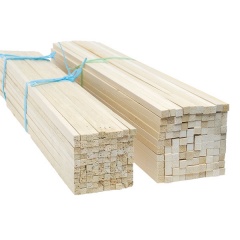Jelutong (Jelatong)
| Infobox on Jelutong (Jelatong) | |
|---|---|
| Example of Jelutong (Jelatong) |  |
| Facts | |
| Origin | - |
| Stowage factor (in m3/t) | - |
| Humidity / moisture | - |
| Ventilation | - |
| Risk factors | See text |
Jelutong (Jelatong)
Description
The jelutong (Dyera costulata, syn. D. laxiflora) is a species of tree in the oleander subfamily. It grows to approximately 60 metres tall with diameters of 2 metres, or even to 80 m tall with diameters to 3 m and boles clear and straight for 30 m. It grows in Malaysia, Borneo, Sumatra and southern Thailand. Its natural distribution is scattered locales in low-elevation tropical evergreen forest.
Base product, specialist hardwood timber. A lower grade form of Gutta Percha, grayish-white in colour, exported in considerable quantities from Malaysia. It is generally formed into flat slabs usually packed into hessian bags or wooden cases. Although technically it is a hardwood, it has many properties which are similar to softwood, such as Balsa Wood. The wood is therefore popular with model makers.
Jelutong is used for its wood. Along with balsa it is technically a hardwood with many properties similar to that wood. These properties such as the low density, straight grain and fine texture mean it is easy to work with and hence popular with model makers and within the patternmaking trade. The roots are also used as a substitute for cork. Originally the latex was used in the manufacture of chewing gum and sometimes rubber, but this use has been abandoned meanwhile.
Jelutong has been traditionally overharvested, and is a threatened species in many areas. However, due to its quick growth, hardy survival, and strong replanting efforts, its extinction is unlikely. It is a protected species in parts of Malaysia and Thailand. The tree is grown commercially for timber.
Sawdust from this species has been known to cause allergic dermatitis.
Shipment / Storage / Risk factors
Jelutong has certain objectionable qualities which often leads to rotting of packing before discharge. It has a very high moisture content and is subject to considerable loss in weight. This can occur in a very short time. Is also liable to loss through drainage, especially if subjected to high temperatures. Particular attention should be paid to stowage and storage.
Jelutong should not be stowed close to delicate goods, including rubber which will become mouldy.











